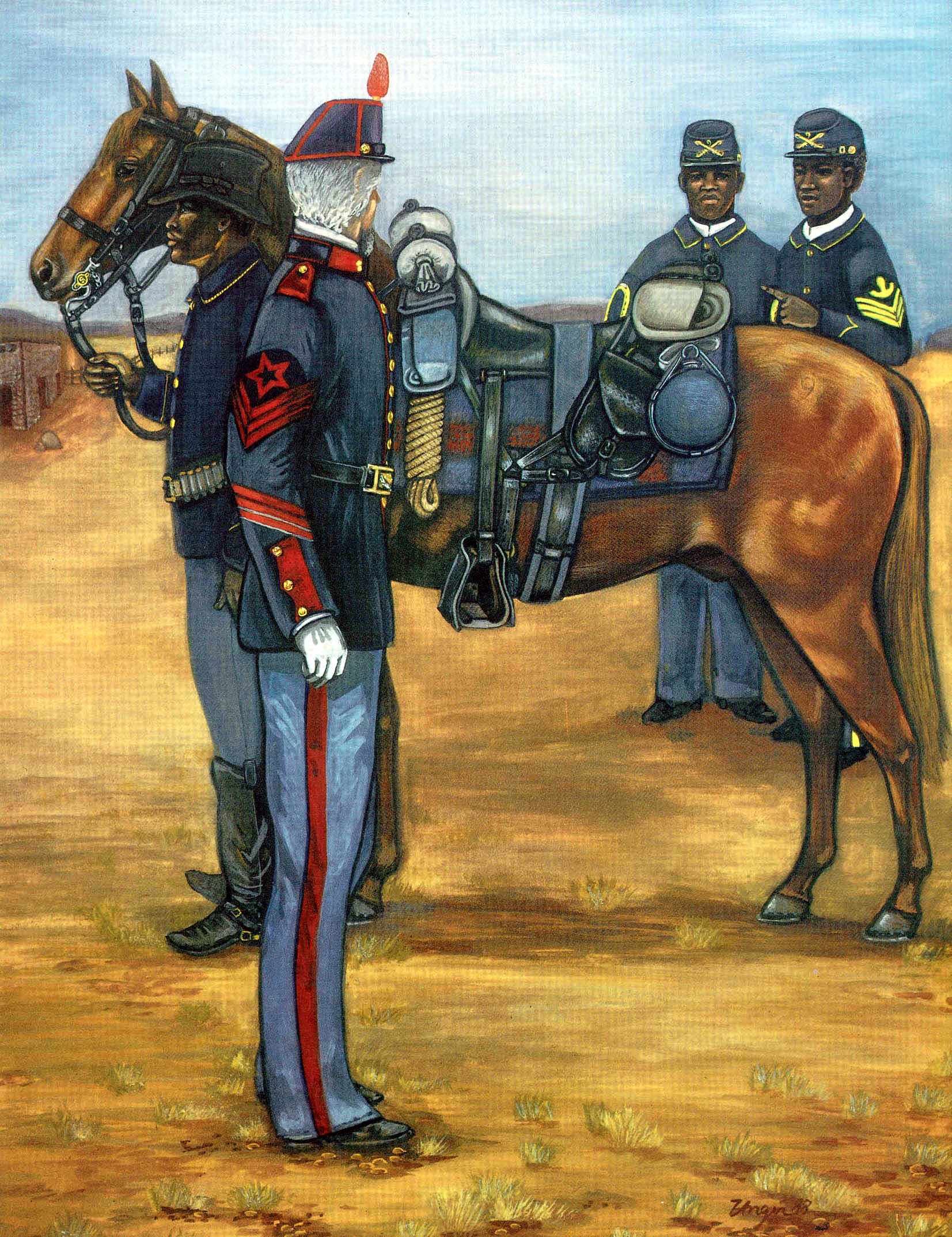
Ready for Patrol
New Mexico, 1870s
The Army's noncommissioned officers emerged from the Civil War with new requirements for technical competence. Their growing specialization was evident in the small, isolated coastal and frontier forts garrisoned by the regular forces. Each line soldier, whether a cavalry trooper, infantryman, or cannoneer, was supported by a growing number of technicians. Here, in a Southwest garrison, a cavalryman gets ready for a long desert patrol. An ordnance sergeant, a farrier, and a saddler check the equipment. A soldier's life could well depend on the NCO's competence during the course of a dangerous patrol.
New regulations prescribed in 1872 included improved fatigue clothing for general wear and a dress uniform influenced by contemporary Prussian practices. The basic branch of service was indicated both by trim colors (here yellow for cavalry and crimson for the ordnance department) and by insignia on the front of the forage cap worn in garrison. The trooper ready for patrol wears the less formal fatigue hat. His footwear, made at the federal penitentiary at Leavenworth, Kansas,
consists of new, taller boots with tops that permit him to tuck in his trousers.
The trooper's mount bears a saddle pack in full marching order, ready for patrol. The pack includes small saddlebags for personal articles, extra ammunition, spare horseshoes, and nails; a cantle roll of shelter tent, wrapped around a blanket and extra clothing; and a pommel roll of caped overcoat, poncho, and forage sack with rations for the horse. Balanced on the near and far sides of the mount are the side line, lariat, picket pin, tin canteen, cup, and haversack with rations, the nosebag, and a grooming kit with brush and curry comb.
Each staff NCO had his function indicated on his chevrons-a leather knife insignia for the saddler, a horseshoe for the farrier, and a star for the ordnance sergeant. Other stripes on the sleeve indicated years of service and, when edged in white, wartime service.